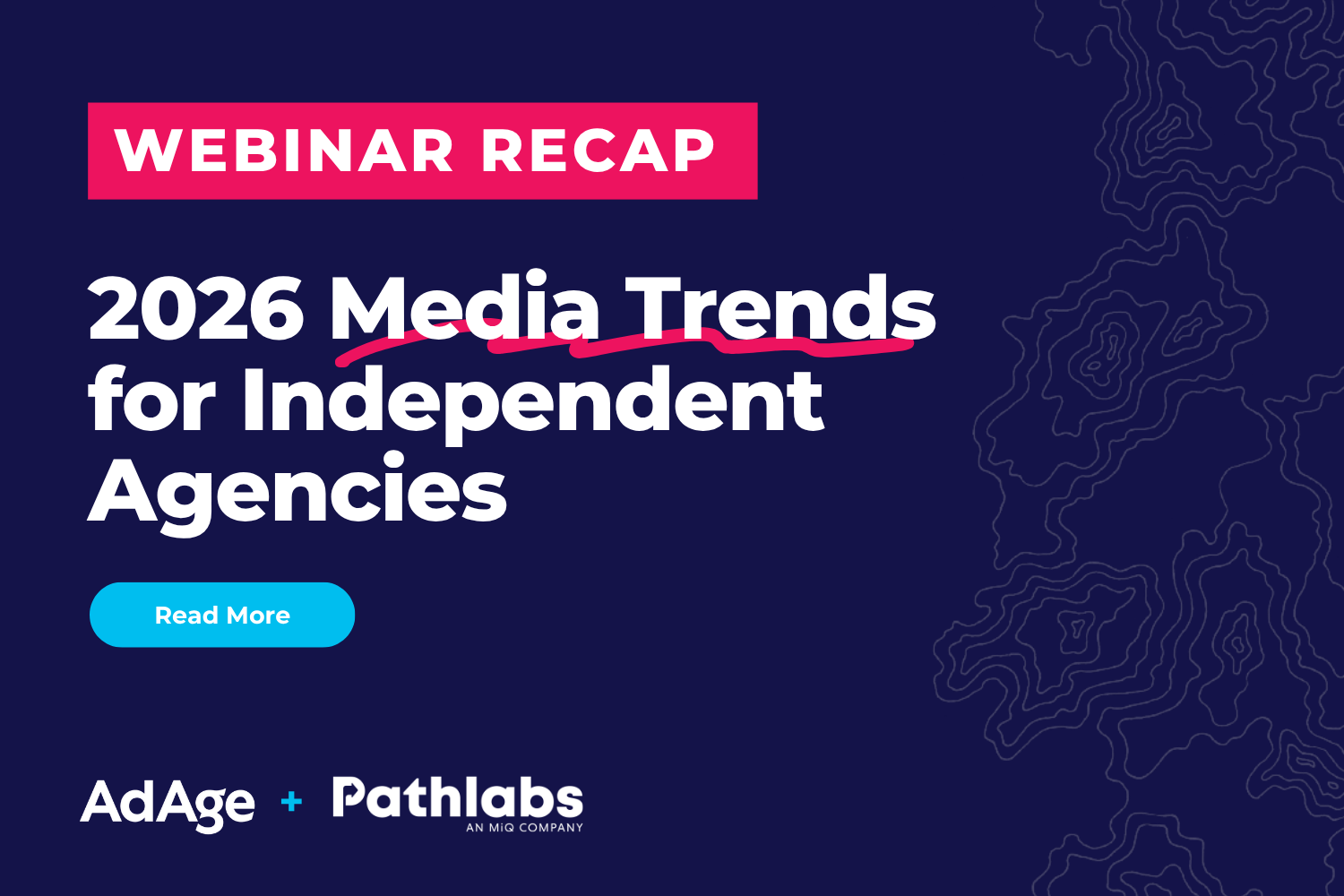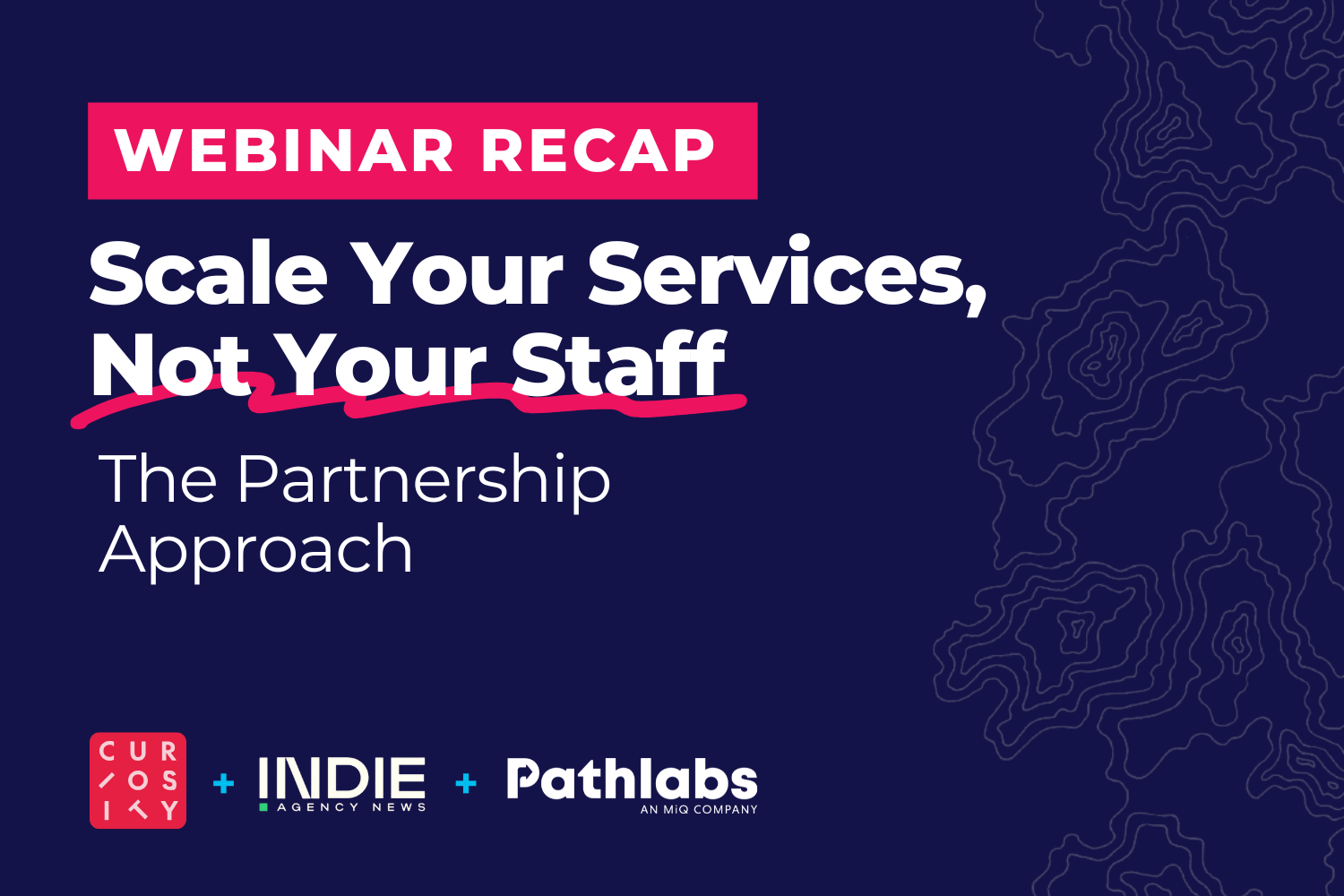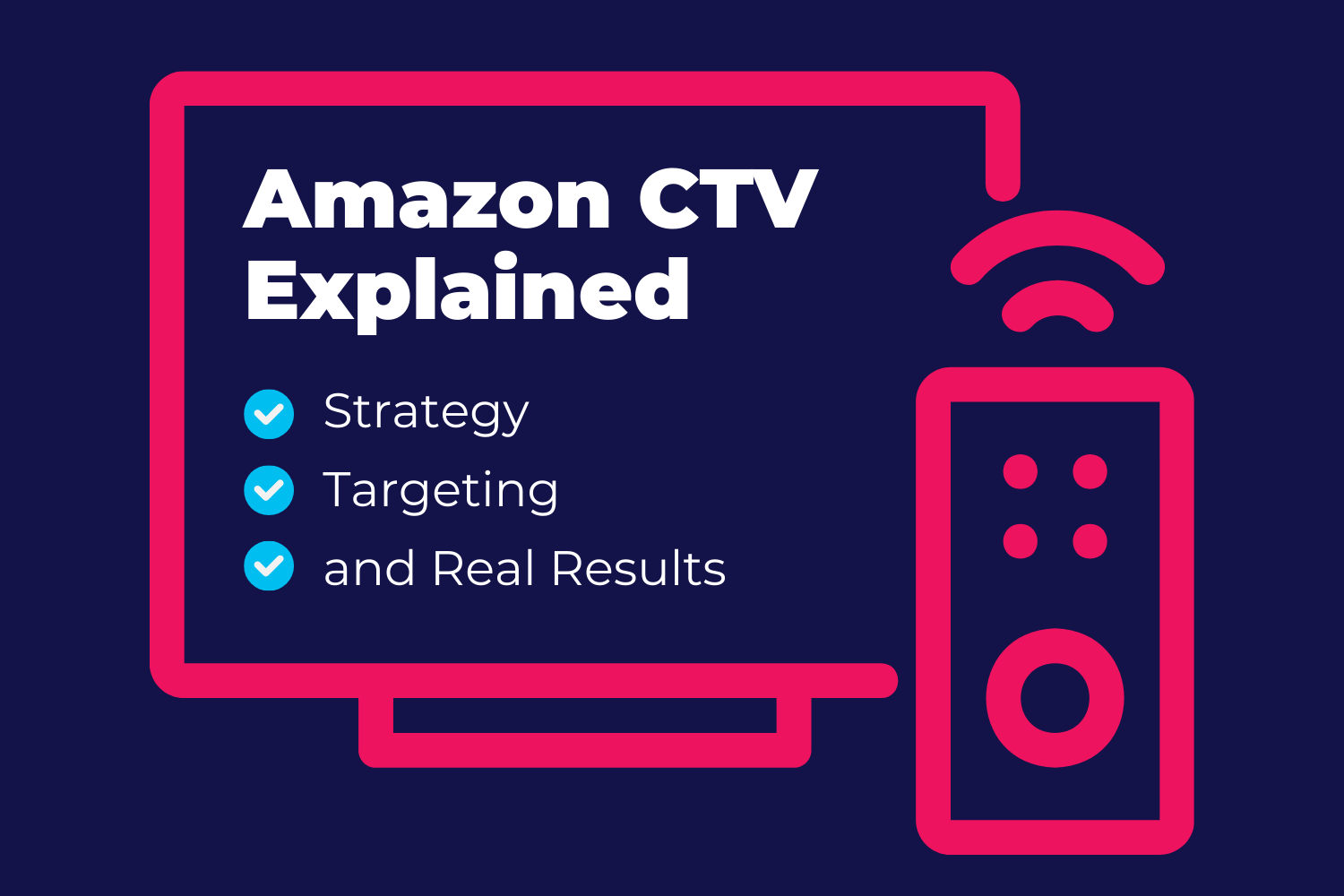Choosing The Right Marketing Channel For Your Funnel
| Pathlabs Marketing |
| October 21, 2025 |
There’s nothing more frustrating than investing significant time, energy, and resources into marketing, only to see your message reach the right people but not generate the desired conversions. This scenario plays out in agencies every day because marketers are choosing the wrong channels for the wrong part of their funnel.
Navigating the evolving world of marketing channels can sometimes feel like trying to solve a puzzle while the pieces are constantly changing. Agencies understand the importance of aligning the right channel with the right stage of your sales funnel. However, with so many channel options, such as social media, email, paid ads, and search engine optimization, it's easy to feel overwhelmed.
How do you choose channels that reach your audience and guide them seamlessly from awareness to decision-making? This blog breaks down the process of selecting marketing channels strategically, helping agencies make informed decisions that drive results at every stage of the funnel.
Why Choosing The Right Marketing Channel Is Critical
In today's competitive business environment, simply having a great product or service isn't enough. Choosing the right marketing channel is critical because it ensures your efforts resonate with the right audience at the right time. A mismatched channel creates three major problems:
Wasted resources on audiences who will never convert.
Missed opportunities to connect with prospects at critical moments.
Diluted messaging that fails to move people through your funnel.
Think of your marketing channels as specialized tools in a toolbox. You wouldn't use a hammer to tighten a screw. The same logic applies when selecting channels for different funnel stages. Each stage (awareness, consideration, and decision) requires tailored communication and the right channel to bridge the gap effectively. By strategically aligning channels with funnel stages, you maximize engagement, improve conversion rates, and make every marketing dollar count.
Evaluating Different Marketing Channels
Evaluating marketing channels is about understanding and aligning their unique strengths with your funnel's goals. Not all channels are created equal. What works for awareness may not drive conversions.
When assessing your options, ask yourself three fundamental questions:
Where does your target audience spend their time?
What stage of the buyer journey are you trying to influence?
What's the cost-effectiveness relative to your business goals?
Consider factors like channel reach, audience demographics, and cost-effectiveness while assessing options like social media, paid ads, or email. The key is to match the channel to the stage of the funnel it serves best, ensuring your message reaches the right audience at the right time for maximum impact.
Digital Out-Of-Home (DOOH)
Digital Out-Of-Home advertising offers a powerful way to enhance brand visibility and engage audiences in real-time. Strategically placed digital screens in high-traffic areas can capture attention at the awareness stage of your marketing funnel while providing dynamic, location-based messaging.
Modern DOOH has evolved far beyond static billboards. Advanced technology enables campaigns tailored to:
Demographics (age, gender, household income)
Weather conditions (promoting umbrellas during rain, sunscreen on sunny days)
Time of day (breakfast specials in the morning, dinner options in the evening)
Picture a coffee chain displaying warm beverage ads during a morning commute, then switching to cold drinks as temperatures rise. This flexibility makes DOOH an excellent choice for marketers looking to blend traditional out-of-home advertising with the precision of digital tools, ensuring your brand remains top-of-mind at critical touchpoints.
Streaming Services Advertising
Streaming service advertising has transformed how marketers reach their audience, offering advanced opportunities for digital targeting. Platforms like Hulu or Spotify allow brands to deliver highly personalized messages based on user preferences, viewing habits, and demographics.
Traditional TV commercials reach everyone equally. Streaming ads work differently. They use data to reach viewers with the right message, at the right time. Whether your goal is building awareness or nurturing leads in the consideration stage, streaming services provide a seamless way to connect with engaged viewers. With interactive ad formats and measurable results, this channel ensures your campaigns remain impactful and relevant, driving your audience closer to conversion.
Local Advertising Platforms
For businesses with a geographic footprint, proximity equals opportunity. Local advertising platforms, such as Google My Business or Nextdoor, empower businesses to target specific geographic areas with tailored campaigns that resonate with community audiences. These platforms are particularly effective for driving traffic to your funnel's awareness and decision stages.
Marketers can connect with nearby customers searching for relevant solutions through hyper-local targeting. Whether you're promoting a local offer or raising brand awareness in your area, these platforms ensure your efforts are both focused and impactful, giving your funnel a strong foundation at the community level.
Programmatic Advertising Platforms
Programmatic advertising removes the guesswork from ad placement. It replaces manual negotiations with data-driven automation. These platforms deliver precision through:
Multi-channel reach across apps, websites, and video streams.
Real-time optimization of budget and targeting.
Instant campaign adjustments based on performance data.
Programmatic platforms offer unmatched scalability and efficiency, whether you're aiming for brand awareness or lead generation. For marketers navigating complex funnels, this channel ensures that every impression contributes to achieving the desired outcome.
Native Advertising Platforms
The best ads don't feel like ads at all. They feel like content. Native advertising platforms provide a seamless way to integrate your content into environments where your audience is already engaged. These ads blend naturally into websites, apps, or social feeds, enhancing their effectiveness without disrupting the user experience.
By incorporating a strong campaign strategy, marketers can utilize native ads to build trust and guide prospects through the funnel subtly yet effectively. From increasing brand awareness to nurturing leads at the decision stage, native advertising enables you to craft compelling narratives that resonate deeply with your target audience, driving meaningful engagement and conversions.
Mobile Advertising
Mobile advertising has become indispensable for engaging on-the-go audiences, offering personalized messaging across apps, mobile web, and SMS. Your customers carry your potential touchpoint in their pockets. Make it count. Effective media planning and buying for mobile campaigns ensure your ads reach the right audience at the right time, from the awareness to the decision-making stages.
With mobile devices being a constant companion, these channels provide unique opportunities for real-time engagement and location-based targeting. Interactive ad formats and in-app promotions keep prospects moving smoothly through the funnel.
Display Advertising
Display ads remain a cornerstone of digital marketing, offering visually engaging formats to capture attention across apps, websites, and social platforms. By leveraging integrated media strategies, marketers can ensure their display ads work harmoniously with other campaigns for a cohesive customer journey.
Whether aiming to build brand awareness or retarget prospects in the consideration stage, display ads provide flexibility in format and placement. This approach boosts visibility and reinforces your messaging across multiple touchpoints, helping you guide your audience seamlessly toward conversion.
Search Engine Advertising
Search engine advertising is a powerful tool for capturing high-intent audiences actively seeking solutions. These are prospects with their wallets open, searching for exactly what you offer. You just need to know how to reach them. With ROI advertising in mind, platforms like Google Ads enable marketers to bid strategically for keywords that align with their funnel stages. This ensures that every dollar spent drives measurable results, from increasing website traffic to generating qualified leads.
By crafting compelling ad copy and using precise targeting, you can connect with prospects when they're ready to take action. Search engine advertising delivers directly to conversions, maximizing reach and return.
Social Media Advertising
Social media is where relationships begin. It's also where smart marketers turn scrolling into sales. Social media advertising is a vital channel for reaching audiences where they spend the most time. Platforms like LinkedIn, Facebook, and Instagram offer advanced targeting capabilities, making it easier to tailor messages for every stage of your funnel. From creating awareness with captivating visuals to retargeting warm leads in the decision stage, social media provides scalability and flexibility. With real-time analytics and audience insights, marketers can refine their strategies and achieve measurable outcomes, ensuring their campaigns align with their overall sales funnel goals while delivering impactful engagement. b
How To Choose The Right Digital Marketing Channel For Your Funnel
Now comes the critical question. With all these channels available, how do you actually choose which one to use? Selecting the right digital marketing channel requires a clear understanding of your funnel stages and target audience. Follow this strategic approach:
Map your customer journey from first touch to final conversion.
Identify where your audience spends time at each stage.
Match channels to stages based on natural audience behavior.
Evaluate budget and resources for each potential channel.
Test and measure performance before committing fully.
Each channel plays a unique role, from building brand awareness to nurturing leads and driving conversions. By aligning channels with your funnel's objectives, you'll maximize efficiency and ROI, ensuring that your marketing efforts reach the right audience and drive desired results.
Creating A Cohesive And Seamless Customer Journey Across Channels
When you desire to optimize your funnel, creating a seamless customer journey across channels is essential. Your customers don't experience your marketing in isolated silos. They experience it as one continuous conversation with your brand. Consistency in visuals, messaging, and touchpoints ensures a unified brand experience. Attribution in digital marketing plays a crucial role in understanding how each channel contributes to your funnel, enabling you to refine strategies and allocate resources effectively.
Marketers can guide customers smoothly from awareness to conversion by integrating various platforms and aligning efforts. This approach builds trust and strengthens brand loyalty, ensuring that every interaction adds value and keeps your audience engaged throughout their journey.
Setting Clear Goals And KPIs
Defining clear goals and KPIs is critical for aligning your funnel strategy with measurable outcomes. Without defined metrics, you're navigating in the dark. You might move forward, but you won't know if you're heading in the right direction. Whether you're focused on lead generation, awareness, or sales, goals should be specific and actionable. A strategy such as performance-based marketing ensures you track and optimize campaigns for tangible results.
Use metrics like click-through rates, cost per acquisition, and conversion rates to measure success at each funnel stage. With well-defined objectives and data-driven insights, you can adjust tactics and improve efficiency, ensuring your marketing channels deliver maximum impact for your business.
Optimizing Budget Utilization Across Channels
Effectively optimizing your marketing budget across channels is vital for achieving a balanced and impactful funnel strategy. Your budget is finite, but your opportunities aren't. The key is knowing where to invest for maximum return. Begin by assessing the performance of each channel and identifying which delivers the highest ROI for specific funnel stages. Allocate resources strategically, ensuring high-performing channels receive adequate investment while experimenting with new opportunities.
Tools like real-time analytics can help refine your spending and uncover hidden inefficiencies. By aligning your budget with the channels that support your funnel goals, you'll maximize impact and minimize waste, ultimately driving better campaign results.
Emerging Trends And Innovations
Staying ahead of emerging trends and innovations in marketing is vital for keeping your funnel strategy competitive. The digital landscape evolves rapidly. What worked last year might not work tomorrow. Technologies like AI-driven targeting, voice search optimization, and immersive ad formats are transforming how brands connect with audiences.
Marketers should explore innovations like machine learning for personalized content delivery and advancements in programmatic advertising to streamline media buying. As consumer behaviors shift, adopting these trends ensures your campaigns remain relevant and effective. By integrating cutting-edge solutions into your strategy, you'll enhance engagement and position your brand as a leader in digital marketing.
Ready To Identify The Perfect Marketing Channel For Your Sales Funnel?
Remember that overwhelming question from the beginning about choosing channels that actually work?
Selecting the right marketing channel for your funnel is a dynamic process that requires strategic thinking, data analysis, and a deep understanding of your audience. Each channel plays a unique role, and when chosen thoughtfully, they work together to guide customers seamlessly from awareness to conversion.
The perfect channel strategy isn't about choosing the best option. It's about orchestrating multiple channels into a symphony that moves your audience from strangers to customers, then from customers to advocates.









